#jean shinoda bolen
Text
El verdadero coste de cualquier cosa es aquello a lo que renunciamos para obtenerla.
Las diosas de cada mujer: Una nueva psicología femenina, Jean Shinoda Bolen.
#las diosas de cada mujer#jean shinoda bolen#read 2023#frases libros#frases literatura#frases literarias#libros#literatura#leo autoras
78 notes
·
View notes
Text

Cuando recuperes o descubras algo que alimenta tu alma y te trae alegría, encargate de quererte lo suficiente y hazle un espacio en tu vida.
(Jean Shinoda Bolen)
28 notes
·
View notes
Text
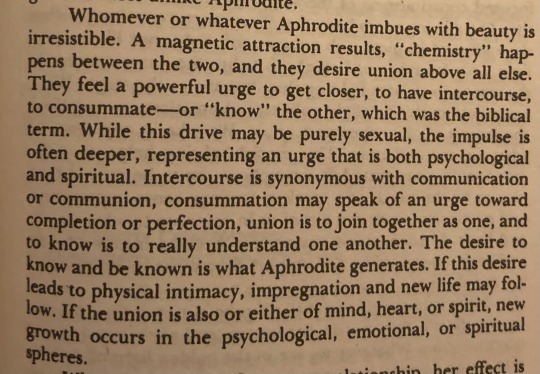
So… this is what romance and sex means to me. For some reason, this is a foreign language to people, but this is it folks.
Apparently Aphrodite herself sees it the same way.
#Aphrodite#mythology#jean shinoda bolen#philosophy#archetypes#books#psychology#magic#spirituality#demisexuality#lgbt#pride
64 notes
·
View notes
Text
“Women who follow their own inclinations to become competitive swimmers, active feminists, scientists, statisticians, corporate executives, housekeepers, horsewomen, or who enter convents or ashrams exemplify virgin goddess qualities. In order to develop their talents and focus on pursuing what has personal value, virgin goddess women often avoid fulfilling traditional women's roles. How to do so—that is, how to be true to themselves and adapt to living in ‘a man's world’—is the challenge.
In mythology, each of the three virgin goddesses faced a similar challenge, and developed a different solution.
Artemis, Goddess of the Hunt, forsook the city, avoided contact with men, and spent her time in the wilderness with her band of nymphs. Her adaption mode was separation from men and their influence. This mode is analogous to that of contemporary women who join consciousness-raising groups and become feminists intent on defining themselves and their own priorities, or who work in women-run collectives and businesses that serve womens' needs. Artemis women are also represented by "rugged individualists," who go it alone and do what matters to them, without personal support or approval from men—or from other women, as well.
In contrast, Athena, Goddess of Wisdom, joined men as an equal or as a superior at what they did. She was the coolest head in battle and the best strategist. Her adaptation was identification with men—she became like one of them. Athena's way has been taken by many women who have joined the corporate world or who have succeeded at traditionally male occupations.
Finally, Hestia, Goddess of the Hearth, followed an introverted way of adapting by withdrawal from men. She withdrew inward, became anonymous in appearance, and was left alone. The woman who adopts this mode downplays her femininity so as not to attract unwanted male interest, avoids competitive situations, and lives quietly, as she values and tends the daily tasks or meditation that give her life meaning.”
-Jean Shinoda Bolen, Goddesses in Everywoman
48 notes
·
View notes
Text

Looking through Elsa Schiaparelli’s store window, Paris 1951 Photo Regina Relang ::
* * * *
Whenever some great work is to be accomplished, before which a man recoils, doubtful of his strength, his libido [life-creating energy] streams back to the fountainhead – and that is the dangerous moment when the issue hangs between annihilation and new life. For if the libido gets stuck in the wonderland of this inner world, then for the upper world man is nothing but a shadow, he is already moribund or at least seriously ill. But if the libido manages to tear itself loose and force its way up again, something like a miracle happens: the journey to the underworld was a plunge into the fountain of youth, and the libido, apparently dead, wakes to renewed fruitfulness.
- C.G. Jung, The Battle for Deliverance from the Mother, CW 5: Symbols of Transformation, par. 449.
+
The experience of the underworld is overwhelming and must be made. This style of the underworld experience is overwhelming, it comes as violation [as does rape], dragging one out of life and into the Kingdom that the Orphic Hymn to Pluto describes as "void of day." So it often says on Greek epitaphs that entering Hades [the kingdom of the dead] is "leaving the sweet sunlight." Aspects of the psychological mystery [secret initiation] of Eleusis still take place in the soul today. The Persephone [whose name means "bringer of destruction"] experience occurs to us each in sudden depressions, when we feel ourselves caught in hatefulness, cold, numbed, and drawn downward out of life by a force we cannot see, against which we would flee, distractedly thrashing about for naturalistic explanations and comforts for what is happening so darkly. We feel invaded from below.
- James Hillman, The Dream and the Underworld (Harper & Row Publishers 1979), pp. 48-49.
+
Most heroic journeys involve going through a dark place – through mountain caverns, the underworld, or labyrinthine passages to emerge, finally, into the light. Or they may involve traveling through a desolate wasteland or desert to a green land. This journey is analogous to passing through a depression. In the myths as in life, the traveler needs to keep on moving, to keep on functioning, to do what has to be done, to stay in touch with her companions or manage alone, to not stop and give up (even when she feels lost), to maintain hope in darkness. The darkness may represent those dark, repressed feelings (of anger, despair, resentment, blame, vengeance, betrayal, fear, and guilt) through which people must pass if they are to get out of a depression. It helps to realize that death and rebirth, in myth and dreams, are metaphors for loss, depression, and recovery. Many such dark periods turn out to be rites of passage, a time of suffering through which a woman has learned something of value, and has grown. Or she may have been, for a while, like Persephone in the underworld, a temporary captive who later becomes a guide for others.
- Jean Shinoda Bolen, Goddesses in Every Woman: Powerful Archetypes in Women's Lives (HarperCollins e-books), p. 289.
+
Myths include the phenomena that are discredited in normative psychology, where they are called abnormal, bizarre, absurd, self destructive, and sick. If we pursue this difference between usual psychology and mythology, we see clearly how 'mythology saves the phenomena of psychopathology. Psychology finds place for these phenomena of the soul only by discrediting them; mythology credits them just as they are, finding them necessary to its account. It is not the myth that is wrong but our ignorance of its workings in us. Archetypal psychology looks to myth for its base, it too regards the pathologized phenomena of the psyche as necessary to a complete account of any psychic complexity. Without psychopathology there is no wholeness; in fact, psychopathology is a differentiation of that wholeness.
- James Hillman, Re-Visioning Psychology (Harper & Row Publishers 1975), p. 108.
[Analytical Psychology: Theory and Practice]
14 notes
·
View notes
Text
Masterlist
This contains a list of my archetype analysis on different media.
The concept of archetypes is introduced by Carl Jung into psychology. Archetypes are "preexistent, or latent, internally determined patterns of being and behaving, of perceiving and responding". These patterns exist in our personal and collective unconscious, and can be described in personalized ways like in the forms of gods and goddesses. Hence, myths are archetypal stories, as they evoke feelings and images, and touch on themes that are universal and part of our human inheritance. Even in different cultures, the same patterns exist in different myths, and this can help us to share our human experiences and understand each other.
The books I use for my analysis are (they are available on the Internet as PDF format):
“King, Warrior, Magician, Lover: Rediscovering the Archetypes of the Mature Masculine” by Robert Moore and Douglas Gillette
"Goddesses in Everywoman" by Jean Shinoda Bolen
"Gods in Everyman" by Jean Shinoda Bolen
Note: "King, Warrior, Magician, Lover" is used for the Mandalorian season analysis. I use "Goddesses in Everywoman" and "Gods in Everyman" for other analysis.
The Bad Batch

Series Analysis
The 3 Seasons: The Myth of Persephone
Why I believe Tech is alive
The Bad Batch arc in Clone Wars is deeper than you think!
Character Analysis
Omega's Archetypes
Wrecker's Innate Archetype
Wrecker's Anima
Echo's Innate Archetype
Echo's Anima
Hunter's Innate Archetype
Hunter's Anima
Tech's Innate Archetype
Tech's Anima
Crosshair's Innate Archetype (Part 1)
Crosshair's Innate Archetype (Part 2)
Crosshair's Anima
The Mandalorian

Archetypes by Seasons
Season 1: The Warrior
Season 2: The Lover
The Book of Boba Fett and Season 3: The Magician
Season 4 Theory: The King
Other Analysis
Coming soon!
Moon Knight

Coming soon!
House Comes with a Bird
youtube
Coming soon!
#masterlist#archetypal psychology#archetypes#king warrior magician lover#goddesses in everywoman#gods in everyman#jean shinoda bolen#star wars#the mandalorian#sw the mandalorian#star wars the mandalorian#the bad batch#tbb#sw tbb#sw the bad batch#star wars the bad batch#moon knight#marvel moon knight#marvel#mcu moon knight#mcu#marvel cinematic universe#house comes with a bird#Youtube#star wars the clone wars#star wars clone wars#sw the clone wars#sw clone wars#the clone wars#clone wars
13 notes
·
View notes
Quote
For a women's circle to work as a spiritual and psychological cauldron for change and growth, we need to see every woman in the circle as a sister who mirrors back to us reflections of ourselves.
Jean Shinoda Bolen
18 notes
·
View notes
Quote
when you recover or
discover something
that nourishes
your soul and
brings joy,
care enough about
yourself to make
room for it
in your life.
jean shinoda bolen
2 notes
·
View notes
Text

Goddesses in Everywoman, by Jean Shinoda Bolen
2 notes
·
View notes
Text
New obsession in psychology: Bolen's Feminine Archetype in Greek Goddesses. Fun fact, Bolen was inspired by Jung, who I just found out also the inspiration for MBTI.
1 note
·
View note
Text
La creatividad también es un proceso "sensual" para muchas personas; es una experiencia sensorial del momento que abarca el tacto, el sonido, las imágenes, el movimiento y, a veces, incluso el olfato y el gusto. Un artista sumergido en un proceso creativo, lo mismo que un/a amante, muchas veces descubre, que todos sus sentidos son potenciados y que recibe impresiones de la percepción a través de muchos canales.
Las diosas de cada mujer: Una nueva psicología femenina, Jean Shinoda Bolen.
#las diosas de cada mujer#jean shinoda bolen#read 2023#frases libros#frases literatura#frases literarias#libros#literatura#leo autoras#creatividad
25 notes
·
View notes
Photo

When you discover something that nourishes your soul & brings joy, care enough about yourself to make room for it in your life. Jean Shinoda Bolen
61 notes
·
View notes
Text

Interesting thing here is that while it mentions “the Maiden” and “Queen of the Underworld,” but never “Goddess of Spring.” Perhaps the maiden is the goddess of spring, but I just find it interesting that title isn’t initially here.
Then it mentions the Eleusinian Mysteries as the experience of Persephone descending into the Underworld. Her story is given voice through those mysteries.
How sacred was Persephone in ancient times, that they could only share her side of the story in the mysteries? That’s Hestia-level shit of secret sacredness.
And remember - the mysteries left anybody who experienced it with a renewed appreciation view of life and no more fear of death.
😃 I’m excited
#Persephone#beauty in her daulity#goddesses in everywoman#jean shinoda bolen#archetypes#mythology#psychology
8 notes
·
View notes
Text
Stately, regal, beautiful Hera, whom the Romans knew as Juno, was Goddess of Marriage. She was the consort of Zeus (Jupiter), the supreme god of the Olympians, who ruled over the heavens and earth. Her name is thought to mean "Great Lady," the feminine form of the greek word hero. Greek poets referred her to as "cow-eyed"—to compliment her large and beautiful eyes. Her symbols were the cow, the Milky Way, the lily, and the peacock's iridescent tailfeather "eyes" that symbolized Hera's watchfulness. The sacred cow was an image long associated with the Great Mother Goddesses as provider of nourishment, while the Milky Way—our galaxy, from the Greek gala, “mother's milk”—reflects the belief, predating the Olympian deities, that the Milky Way came from the breasts of the Great Goddess as Queen of Heaven. This then became part of Hera's mythology: when milk spurted from her breasts, the Milky Way was formed. The drops that fell on the ground became lilies, flowers symbolizing another pre-Hellenic belief in the self-fertilizing power of the female genitals. Hera's symbols (and her conflicts with Zeus) reflect the power she once held as a Great Goddess whose worship preceded Zeus. In Greek mythology, Hera had two contrasting aspects: she was solemnly revered and worshipped in rituals as a powerful goddess of marriage, and was denigrated by Homer as a vindictive, quarrelsome, jealous shrew.
-Jean Shinoda Bolen, Goddesses in Everywoman
35 notes
·
View notes
Text

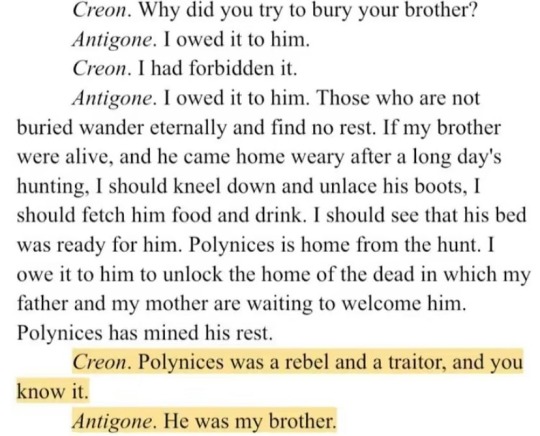



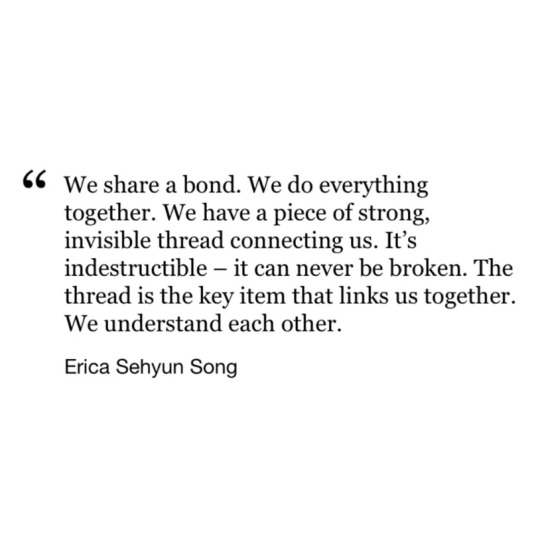


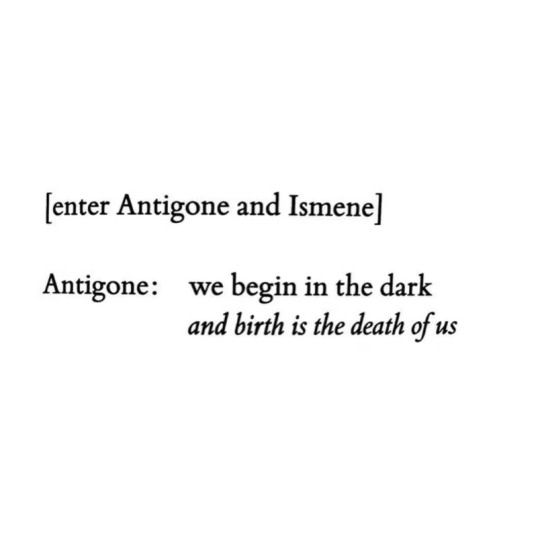

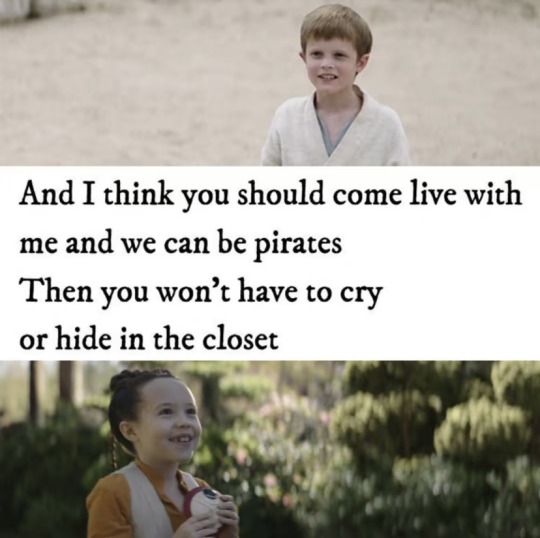
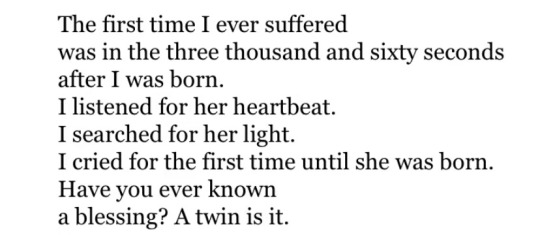

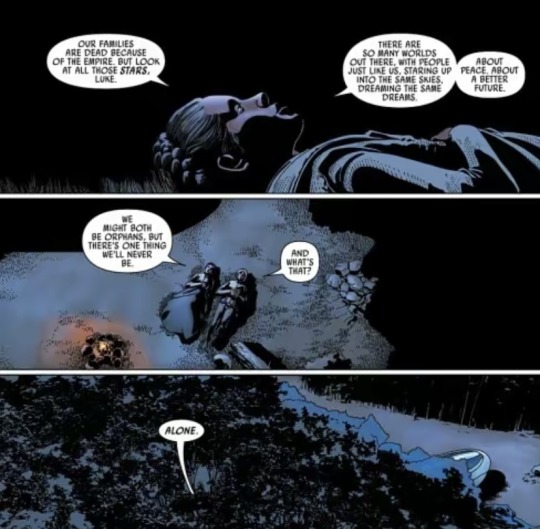



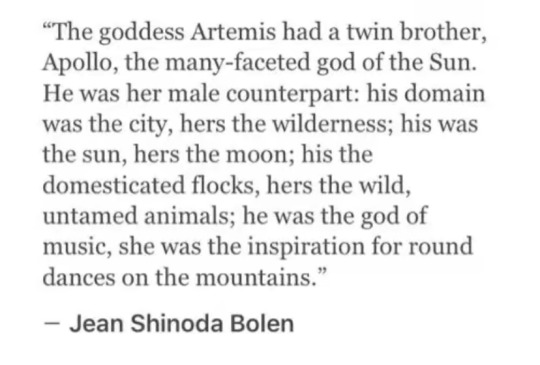
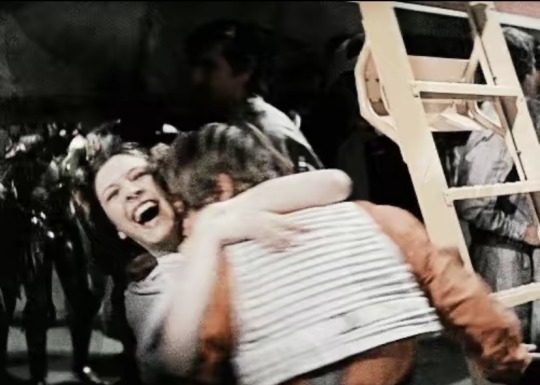

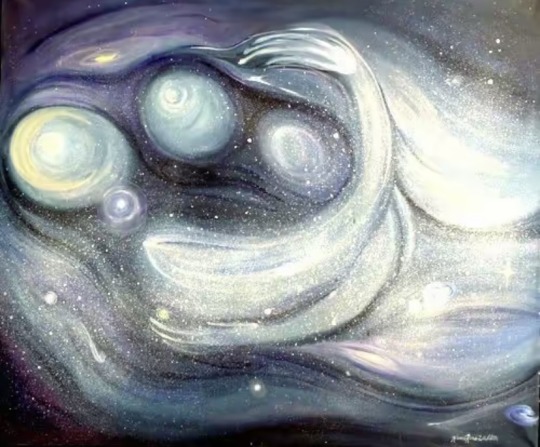
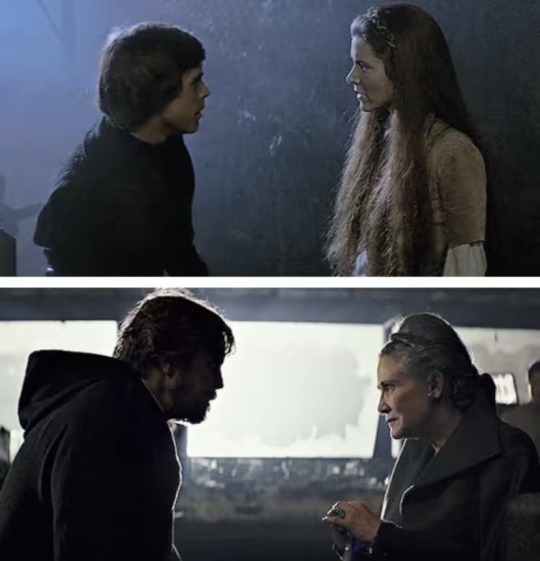
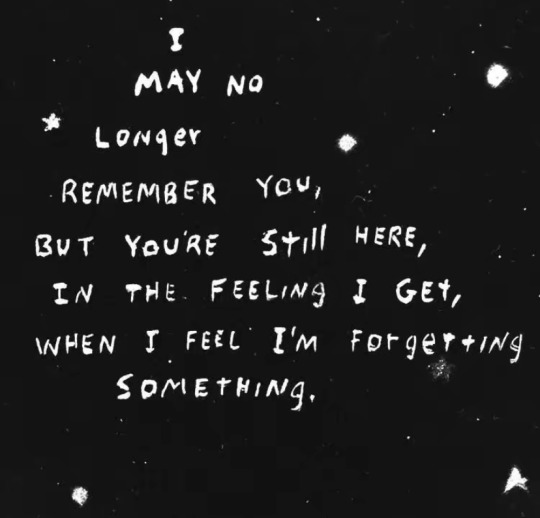

THE SUN AND THE MOON: luke and leia are, of course, apollo and artemis, the divine twins of mythology; who come into the world, male and female, to restore order to it– star wars: the legacy revealed (2007)
1. the empire strikes back (1980) / 2. sophcole’s antigone: adapted by lewis galantine / 3. the last jedi (2017) / 4. gemini artwork: artist unknown / 5. return of the jedi (1983) / 6. quote by erica sehyun song / 7. red string: artist unknown / 8. a new hope (1977) / 9. antigone, by sopcholes (441 BC) / 10. a new hope (1977) / 11. kenobi (2022) & seven, folklore by taylor swift (2020) / 12. quote by kaman kojouri / 13. the empire strikes back (1980) / 14. star wars: marvel comics #33 (2015), art by salvador larroca / 15. galaxy: artist unknown / 16. sign of the times, harry styles (2017) / 17. empire strikes back (1980) / 18. quote by jean shinoda bolen / 19. a new hope (1977) / 20. melodie ramone, after forever ends / 21. outer space: artist unknown / 22. return of the jedi (1983) & the last jedi (2017) / 23. quote by unknown / 24. return of the jedi (1983)
*please let me know the original creators so i can credit them accordingly*
#movies: star wars#ch: luke skywalker#ch: leia organa#sw: space twins#posted this on my tiktok but decided to post here!#webweaving tends to do better on this app lol#to queue or not to queue#please consider reblogging or commenting - i love how this turned out#web weaving#twins!! twins!! twins!!#skywalker twins!!#words words words#parallels the parallels#siblings#quotes#the guilty pleasure of giving twins in media their zodiac in gemini#sw: original trio#*this is NOT associated with mark hamill and his zionist views*
42 notes
·
View notes
Text
Working on my next analysis!
Now the Mandalorian analysis is done, I am now working on my next analysis (and it's the one I am the most passionate about): The Bad Batch!
Although the Bad Batch analysis is my most recent work (The Mandalorian is my first), I think it's important to start with the Bad Batch as I use "Gods in Everyman" and "Goddesses in Everywoman" heavily in this analysis.
"Gods in Everyman" and "Goddesses in Everywoman" by Jean Shinoda Bolen depicted the Greek gods and goddesses as archetypes. I have been interested in Greek mythology since young and I have read them up from various books.
I started studying "Goddesses in Everywoman" and "Gods in Everyman" more than a year ago, yet I struggled to understand and appreciate almost all of the archetypes. I believe it's due to the lack of positive figures in my life. That all changed when I started to analyze the Bad Batch, and it has shifted my perception on these archetypes and on my life.
The Bad Batch analysis consist of a comprehensive analysis on "Gods in Everyman" and "Goddesses in Everywoman". That's why I decide to publish the Bad Batch analysis first so you will have a better understanding on the Greek gods and goddesses as archetypes, which will help you to better understand the other analysis I have planned.
I also hope my Bad Batch analysis will help you to appreciate the series and the main characters more (maybe it will change your life like what happened to me). Seriously, the Bad Batch is severely underrated.
#post#analysis#archetypal psychology#archetypes#gods in everyman#goddesses in everywoman#jean shinoda bolen#star wars#the bad batch#sw the bad batch#sw tbb#tbb
3 notes
·
View notes